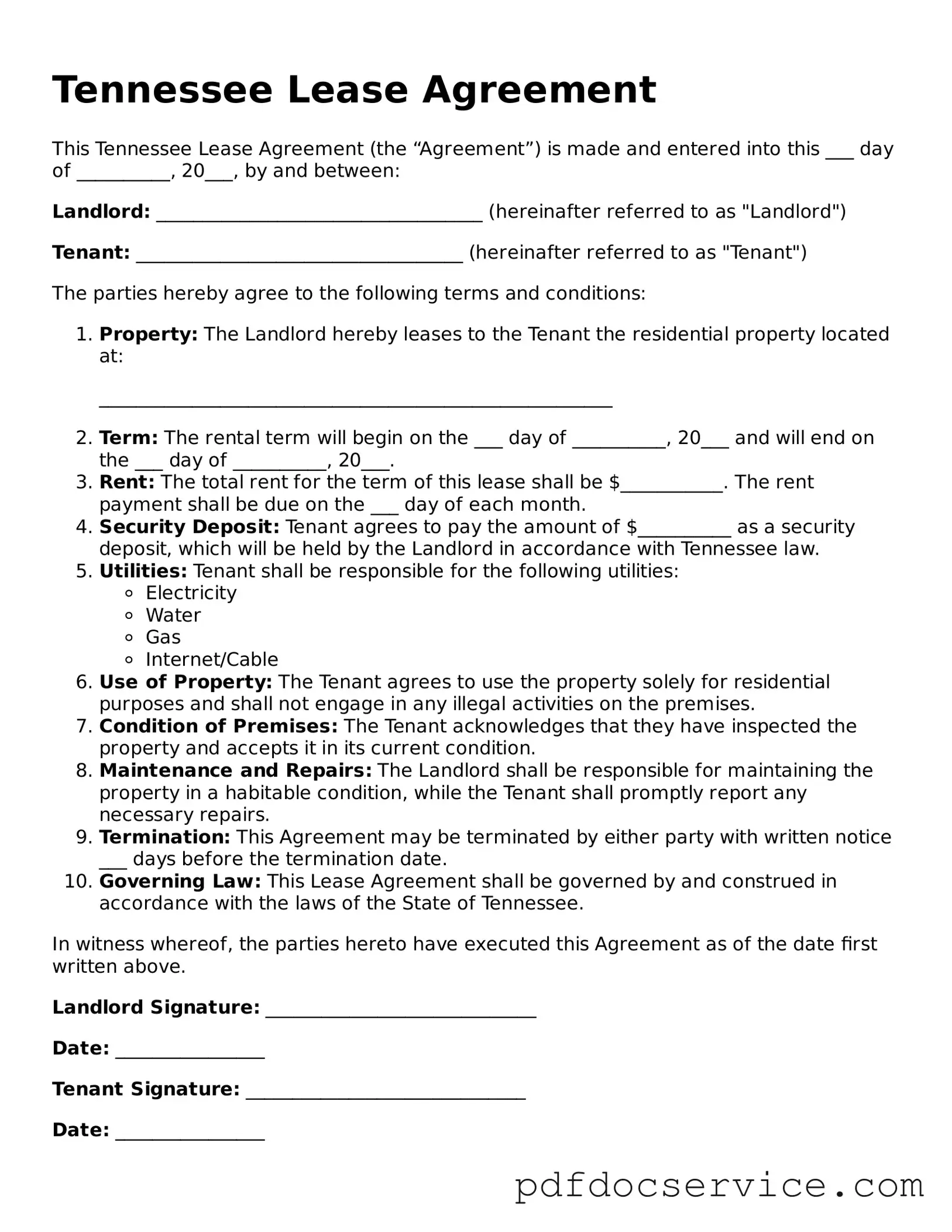What is a Tennessee Lease Agreement?
A Tennessee Lease Agreement is a legal document that outlines the terms and conditions under which a landlord rents property to a tenant. This agreement typically includes details such as the rental amount, duration of the lease, security deposits, and responsibilities of both parties. It serves to protect the rights of both landlords and tenants in the state of Tennessee.
What are the key components of a Tennessee Lease Agreement?
Several important components should be included in a Tennessee Lease Agreement:
-
Parties Involved:
Clearly identify the landlord and tenant.
-
Property Description:
Provide the address and description of the rental property.
-
Lease Term:
Specify the duration of the lease, whether it is month-to-month or for a fixed term.
-
Rent Amount:
State the monthly rent and the due date.
-
Security Deposit:
Indicate the amount and conditions for its return.
-
Utilities:
Outline who is responsible for paying utilities.
-
Maintenance Responsibilities:
Define who is responsible for repairs and maintenance.
-
Termination Conditions:
Explain how either party can terminate the lease.
Is a written lease agreement required in Tennessee?
While a written lease agreement is not legally required for rental agreements that last less than one year, it is highly recommended. A written document helps clarify expectations and provides a reference point in case of disputes. For leases that extend beyond one year, a written agreement is necessary to be enforceable.
What happens if the lease is not signed?
If a lease is not signed, the terms discussed may not be legally binding. However, if both parties act in accordance with the terms (such as accepting rent payments), a verbal agreement may be recognized. Still, relying on verbal agreements can lead to misunderstandings, so having a signed document is advisable.
Can a landlord increase the rent during the lease term?
Generally, a landlord cannot increase the rent during the lease term unless the lease agreement specifically allows for such increases. For month-to-month leases, landlords can increase rent by providing proper notice, typically 30 days in Tennessee. Always check the lease terms for specific provisions regarding rent increases.
What are the tenant's rights in Tennessee?
Tenants in Tennessee have several rights, including:
-
The right to a habitable living environment.
-
The right to privacy, meaning landlords must provide notice before entering the property.
-
The right to receive a return of the security deposit, provided they meet the lease terms.
-
The right to be free from discrimination.
These rights are protected under both state and federal laws.
What should a tenant do if the landlord does not make necessary repairs?
If a landlord fails to make necessary repairs, the tenant should first notify the landlord in writing. It is important to document all communication. If the landlord does not respond or address the issue, the tenant may have the option to withhold rent or make the repairs themselves and deduct the cost from the rent, depending on the situation. Consulting with a legal professional can provide guidance based on specific circumstances.
How can a lease be terminated in Tennessee?
To terminate a lease in Tennessee, tenants must follow the terms outlined in the lease agreement. For fixed-term leases, notice is usually required before the end of the lease. For month-to-month leases, either party can terminate the agreement by providing a written notice, typically 30 days in advance. It is crucial to check the lease for specific termination clauses.
